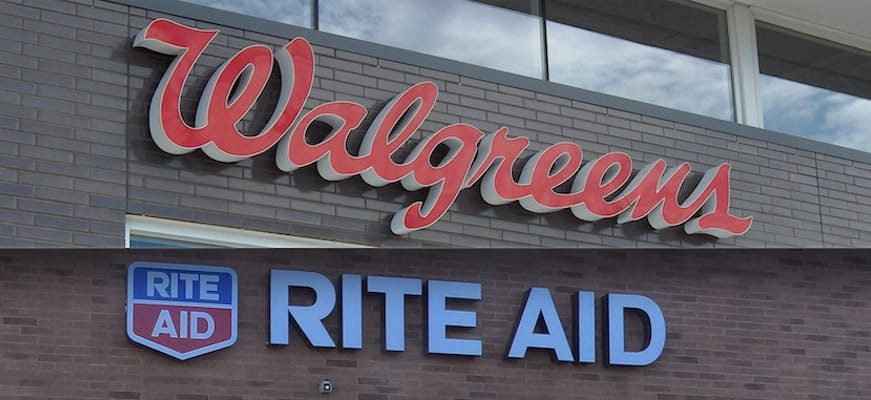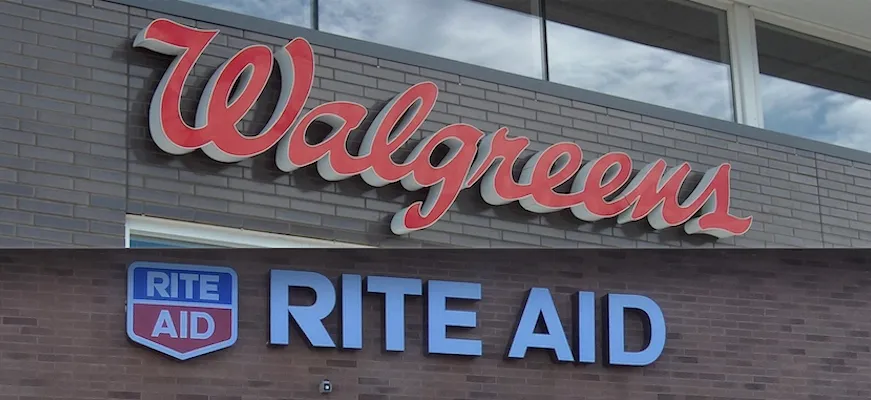
DEERFIELD, Ill., and CAMP HILL, Pa. — Walgreens Boots Alliance (WBA) and Rite Aid Corp. are expanding the time frame for completing their planned $17.2 billion merger deal.
WBA and Rite Aid said Thursday that they have extended the end date for the agreement to Jan. 27, 2017, from Oct. 27, 2016, and expect the transaction to close in early calendar-year 2017.
Under the agreement, WBA and Rite Aid both have the right to extend the end date to Jan. 27, 2017, by delivery of notice to the other, the companies said. WBA had announced the agreement to acquire Rite Aid for $9 per share in cash, plus assume debt, on Oct. 27, 2015.
WBA reiterated the update that it gave on the deal in early September and said the process for gaining approval from the Federal Trade Commission is “progressing as planned.”
“Walgreens Boots Alliance remains actively engaged with the Federal Trade Commission regarding its review of the pending acquisition and continues to expect that the most likely outcome will be that the parties will be required to divest between 500 and 1,000 stores,” WBA said in a statement Thursday. “The company believes that it will be able to execute agreements to divest these stores to potential buyers, pending FTC approval, by the end of calendar year 2016 and now expects its acquisition of Rite Aid will close in early calendar 2017.”
On Sept. 8, WBA said it appears that more than 500 Walgreens and/or Rite Aid stores will need to be divested for regulatory clearance of the merger deal but that it “still continues to expect that fewer than 1,000 stores will be required to be divested.” The company also had reiterated that it expected the acquisition to close in the second half of calendar 2016.
WBA had previously indicated that it was willing to divest up to 1,000 stores to gain regulatory approval but expected divestitures to be less than half that number. Together, Walgreens and Rite Aid would create the largest U.S. chain drug retailer, with more than 12,700 stores.
In recent weeks, media reports have cited sources saying that WBA is having difficulty securing a buyer for stores that would need to be divested for FTC approval of the merger.
This week, reports said Kroger Co. was on the fence about purchasing some of the stores because the FTC was insisting that the divested locations remain stand-alone drug stores, rather than allowing Kroger to integrate their pharmacies into nearby supermarkets and then shut the drug stores. Late last month, reports said a block of 650 stores earmarked for divestiture by WBA didn’t generate enough interest from private equity firms.
When WBA and Rite Aid announced the acquisition deal last fall, the companies cited by industry observers as potential buyers of divested stores included CVS Health, Walmart and Kroger. However, Walmart has scaled back its small-format store strategy, and reports have said that CVS has expressed concerns about store cannibalization if it were to buy some Walgreens and/or Rite Aid locations.
As of early afternoon trading on Thursday, WBA’s share prices were up $2.55 to $79.73, and Rite Aid’s stock price rose 39 cents to $7.05. The share prices for both companies had declined in recent weeks as investors awaited more information about FTC clearance for their merger.
“Even if Kroger is an uninterested buyer, potential remaining Rite Aid store buyers include CVS, regional pharmacy chains and private equity in regional areas where they can buy enough stores to give them scale,” Deutsche Bank Securities analyst George Hill wrote in a research note Thursday. “While Kroger is on the list of potential suitors, we do not view them as core to the store sales, as their business is largely focused on a different store format than the stand-alone pharmacy stores that Walgreens/Rite Aid would be selling.”
WBA may have to up the ante by paring the selling prices for divested stores and/or offering better store locations to potential suitors, according to Hill. “While we would not expect WBA to need to sell the stores at a loss, it is not shocking that the initial package of stores being offered is less attractive,” he explained. “And we would not be surprised if WBA will need to offer more attractive stores or a lower valuation to finalize the deal with buyers, given buyers’ privileged negotiating position.”
Also in the mix for the merger to gain antitrust approval is the influence of pharmacy benefit managers (PBMs) in pharmacy market competition, Hill added.
“The FTC is reported to still be reviewing issues related to the PBMs, which could mean that the current divestiture package that Walgreens is offering is unsatisfactory from the FTC’s viewpoint,” he stated in his report. “Should Walgreens find potential store buyers for what the FTC may deem to be an insufficient divestiture package, it is believed that the FTC may require Walgreens to divest more Rite Aid stores. Alternatively, if Walgreens is unable to attract buyers, the FTC could block the deal through a lawsuit, pushing back the merger agreement’s end date.”
*Editor’s Note: Article updated with share price information and analyst comment.









